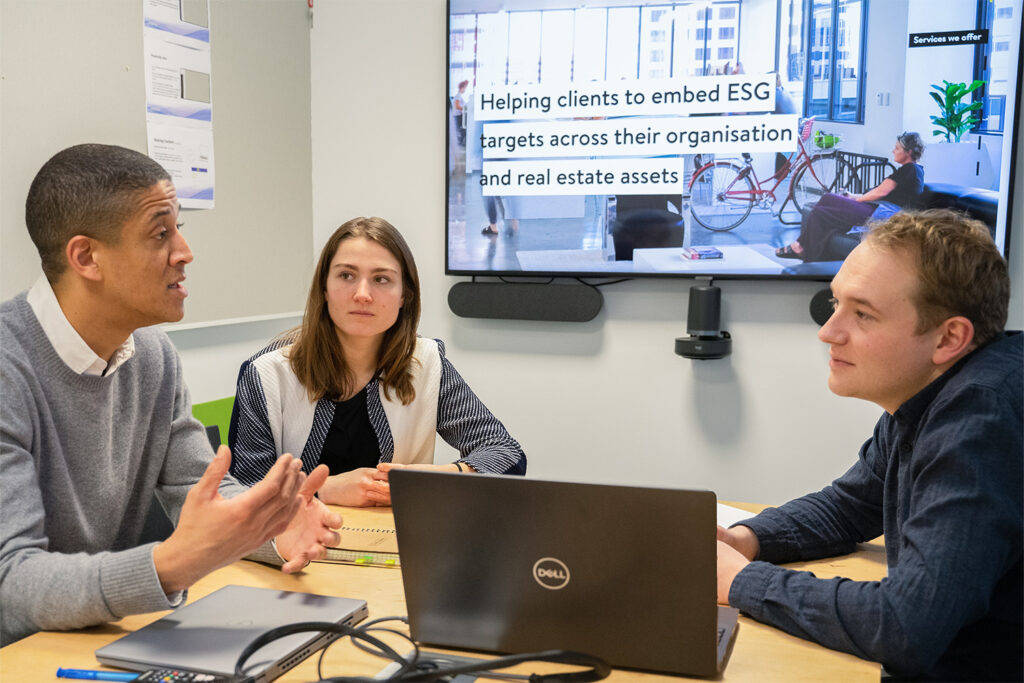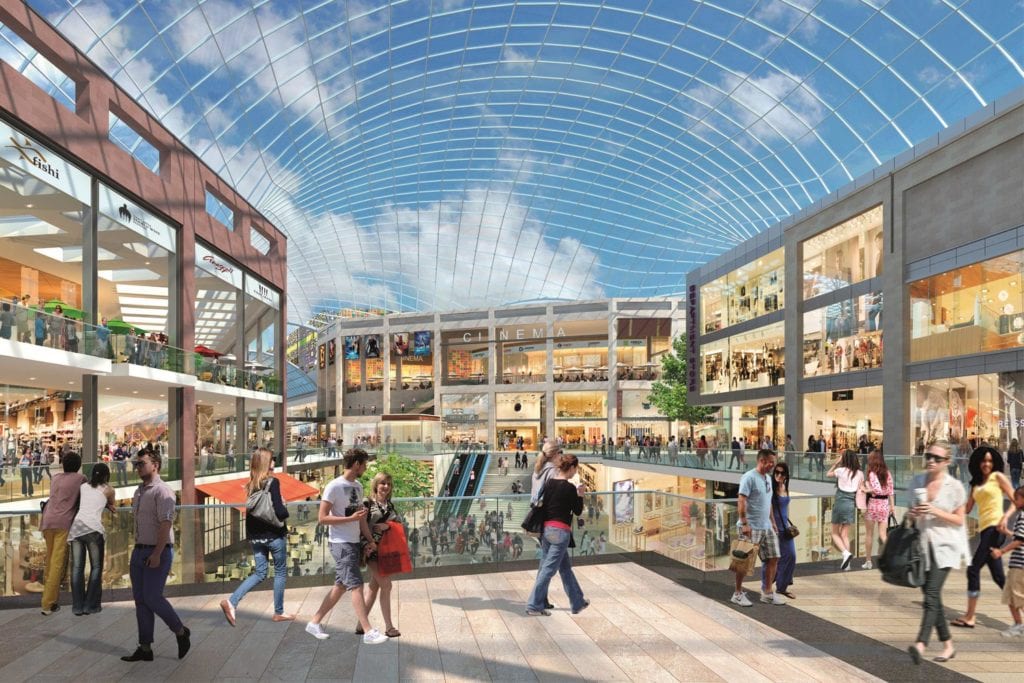Spotlight on ESG in Europe
The need to mitigate climate change is being acknowledged on a global level by the world’s industry and commerce.
The building industry in particular needs to take bigger and faster steps to become more sustainable. In Europe it is the sector with the highest share of greenhouse gas emissions – more than 40% of all emissions produced annually. But there is more to it than simply reducing greenhouse gases. To make a real difference, we must take a holistic approach to sustainability and also consider social factors that are directly or indirectly related to the built environment and that very often go beyond the environmental impacts.
At Buro Happold we recognise that developers face an enormous challenge to meet the ambitious climate directives set by legislative organs such as the EU Disclosure regulation or the EU-Taxonomy regulation. Among several other ESG measures, the EU-Taxonomy is part of the “Action Plan for Financing Sustainable Growth” and contains EU-wide, uniform criteria for determining whether an economic activity is to be classified as sustainable. Since coming into force in January 2022 including important additions this year, compliance with this regulation is legally binding if an investment within a portfolio or fund is to be called sustainable.
Driven by our vision to contribute to a more sustainable and equitable built environment that is in line with the EU’s holistic approach to sustainable development, our interdisciplinary sustainability team brings together industry leading expertise from a range of focus areas helping our clients to meet these challenges. We speak to team members Jamal Rada, Anton Wohldorf, and Felicitas Leithner from our Berlin office about the vital role consultants play in bringing design projects into line with environmental and social goals.

We know, that improving the environmental impact of buildings is not enough for the construction industry to move towards more sustainable future. We must also consider the social impact our design has on the individuals, on the communities, on our society as a whole. Tackling this challenge can be referred to ESG work. But what does ESG stand for and what is it?
Jamal: The concept of sustainability as we know it today consists of at least three dimensions. The term ESG broadly describes them. Accordingly, this abbreviation stands for the areas Environment, Social and Governance.
From now on, companies have to set themselves goals in these areas, which then must be disclosed via transparent, measurable and verifiable indicators. For that reason, the development of an effective and long-term strategy is absolutely necessary.
Well thought-out, successful ESG strategies look at the overall impact the built environment is having or is likely to have. But also, which climate related risks may affect the building or structure. We analyse this constant interaction.
Felicitas: This is why it is so important to develop an ESG strategy right from the start of a project and to include it in planning-relevant considerations. It is much more difficult to achieve sustainability targets that comply with EU regulations in retrospect.
Anton: Exactly, with regard to the environmental aspect, the E in ESG, we look at effective ways to reduce a project’s CO2 footprint, how to improve energy efficiency, which sustainable materials and construction methods could be used, water and waste treatment, possible contaminants, just to name a few.
Felicitas: Just as important is the social impact a new or existing building has. The pertinent questions here are does it support the health, wellbeing and safety of all users, does it foster equality and equity? What about flexibility, accessibility and mobility? We want to make sure that our clients’ projects don’t have a negative impact on their users or the wider community in which they are embedded.
It goes hand in hand with the governance part. Is the client set up or doing enough to make this possible? We are being consulted by many clients who already have an ESG strategy that needs to be implemented. We look at aspects such as life cycle costs, operational costs, infrastructure, sustainable growth, transparency, innovations, sustainable productions and consumption, and human rights, for instance. But there are many more factors that play into governance.

What is the value you as ESG expert bring to new and existing projects?
Anton: I think ESG are three letters that cause a lot of uncertainty for developers and other companies in the construction industry. They are afraid that they are going to get something wrong about it. And that is where we come in. We know the regulations; we know how to technically comply with them and possess the engineering expertise to deliver projects accordingly.
We have developed cutting-edge energy concepts, carried out climate risk screenings, we are working on the transition to a circular economy, our concepts strive to prevent environmental pollution and our strategies primarily include the protection and restoration of biodiversity and ecosystems. The value we bring to a project is our vast experience. We have been active in this field for many years and have an overview of synergies, potentials for savings and improvements in our knowledge toolbox.
Jamal: I agree. We must be aware that the subjects around ESG are currently evolving at a rapid pace. Legislation is often being interpreted very differently. Therefore, our main tasks are to always be up to date with regard to legislation, to implement regulations into practice, to be in close exchange with our clients in order to support decision-making and to provide further training.
Beyond that, we are actively pushing the development of ESG and collaborate with the DGNB, the German Sustainable Building Council, for instance, to give practical feedback for improvement – gained from our work in the field.
How does ESG relate to the EU taxonomy?
Anton: To answer this question, we must look at the whole picture. In general, the EU action plan pursues three goals. One of them is the realignment of capital flows towards a more sustainable and inclusive economy. This is done by explicitly asking about the sustainability preferences of investors and taking them into account to a much greater extent. Second, ecological and social risks should be included in the risk management. In addition, thirdly, the transparency and long-term nature of sustainable financial and economic activities should be promoted. These goals are the basis for ESG in Europe.
Jamal: The EU taxonomy regulation is just one of 10 explicit measures which are currently being implemented to reach the three goals above. And they are not introduced in full at once but successively, step by step. They will be further developed, and they will have a global impact. The legislation tsunami is coming. But we are well prepared, curious and optimistic!


